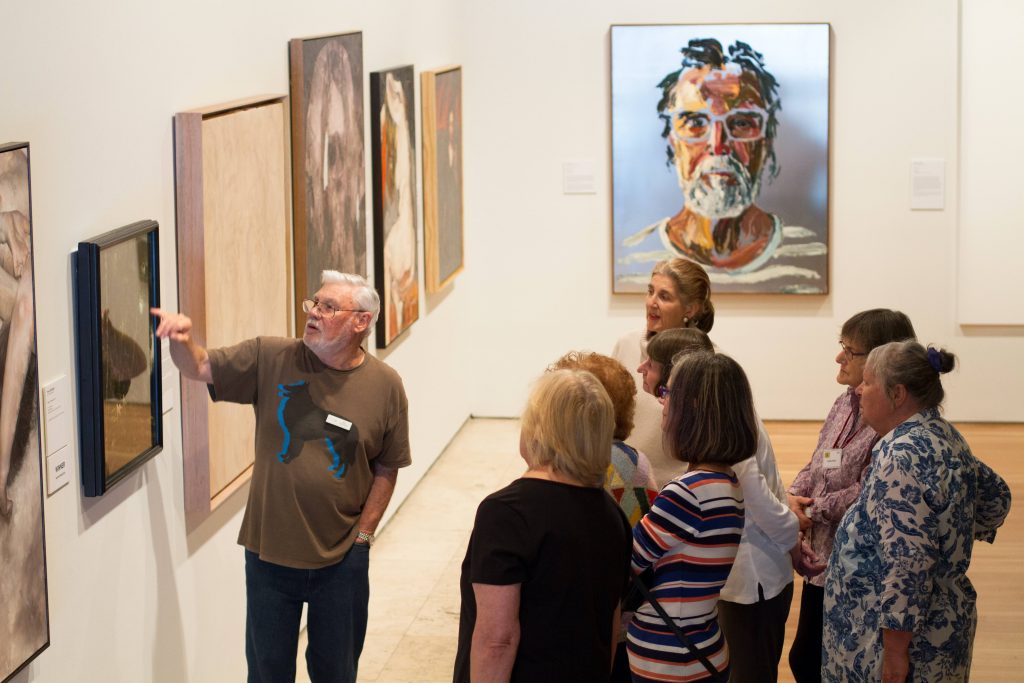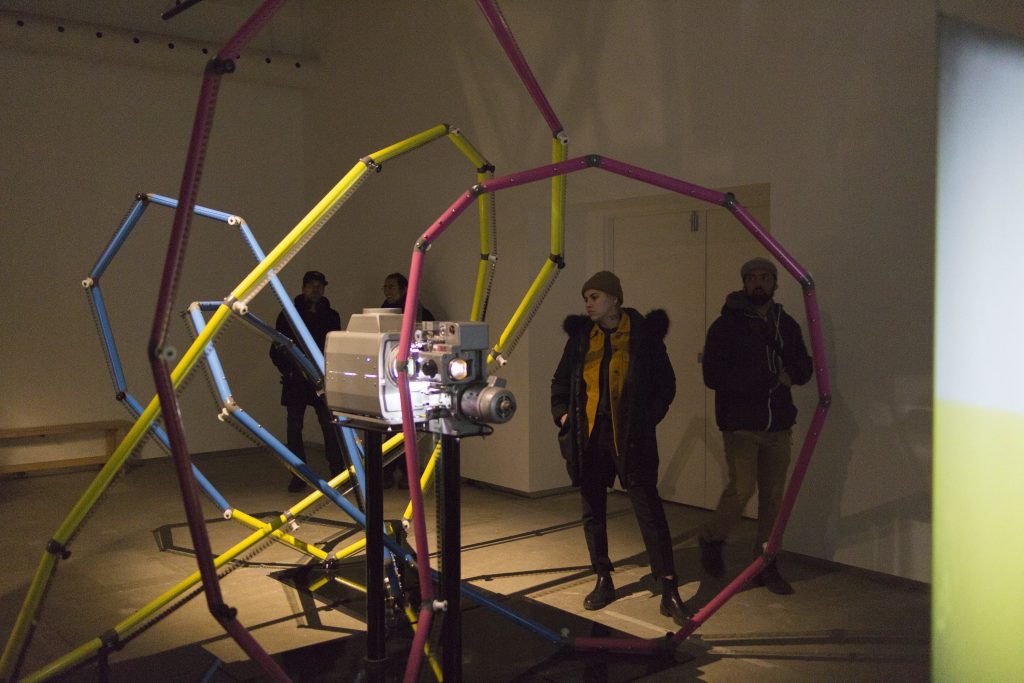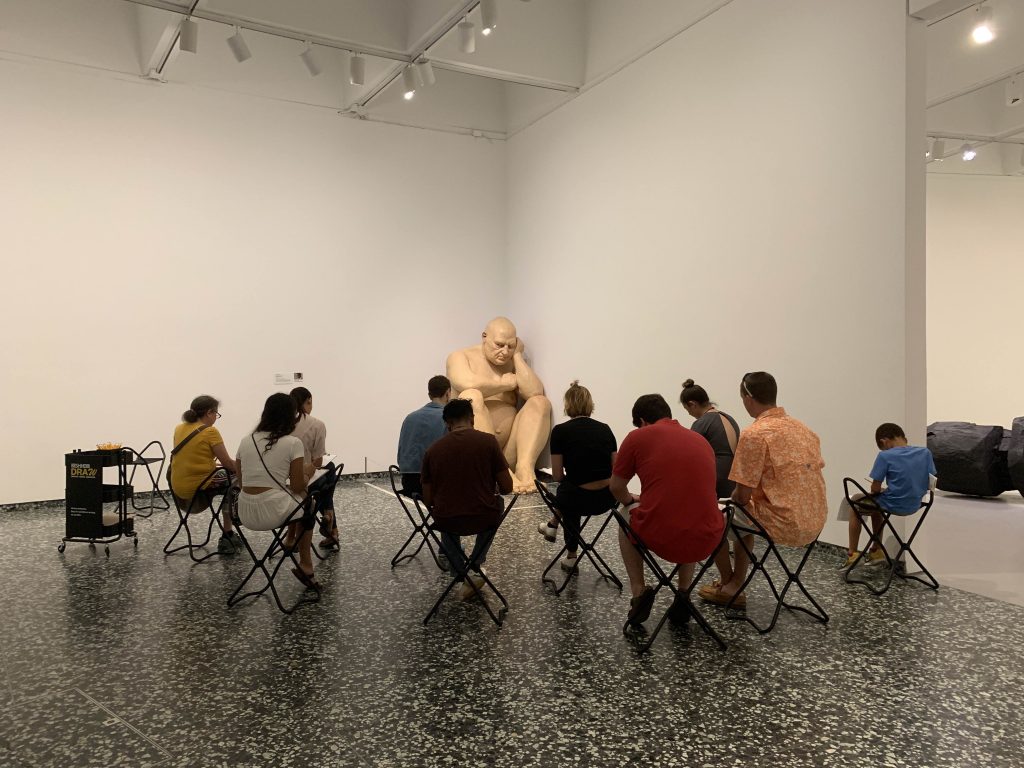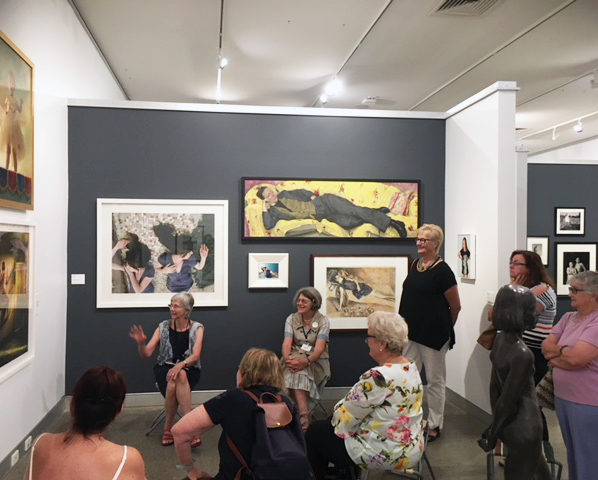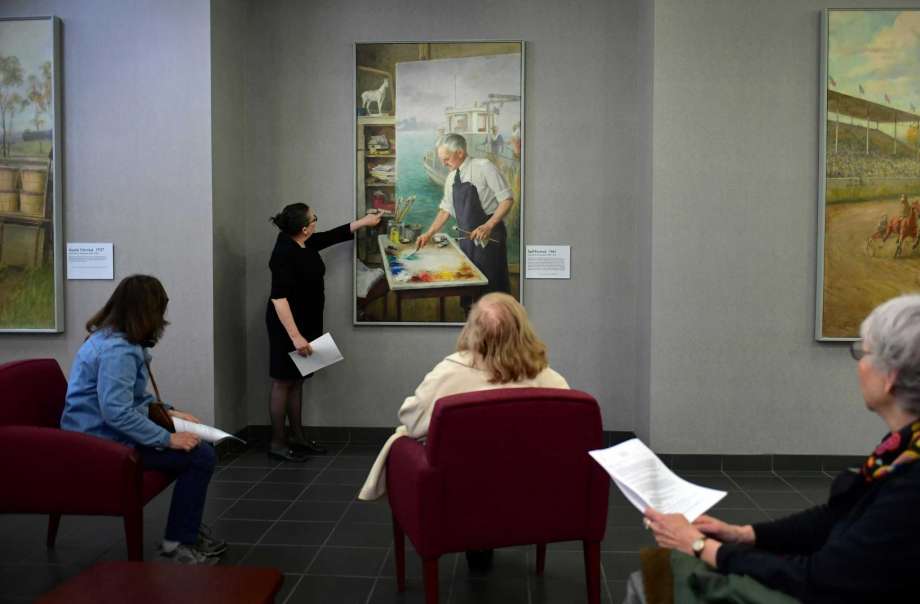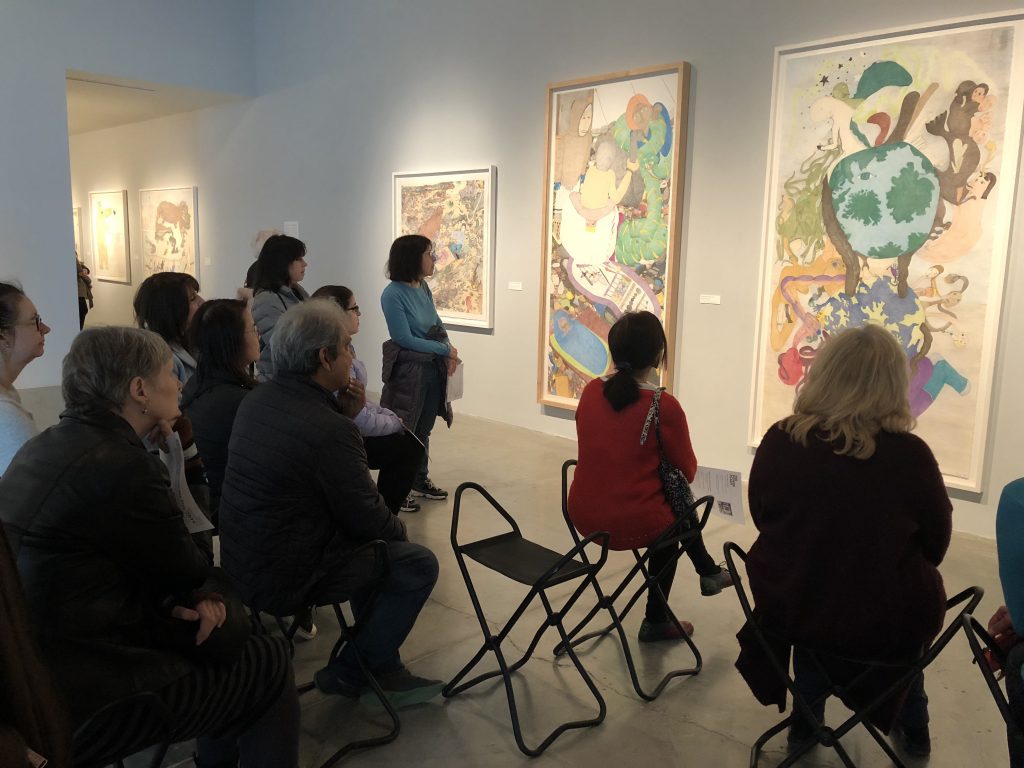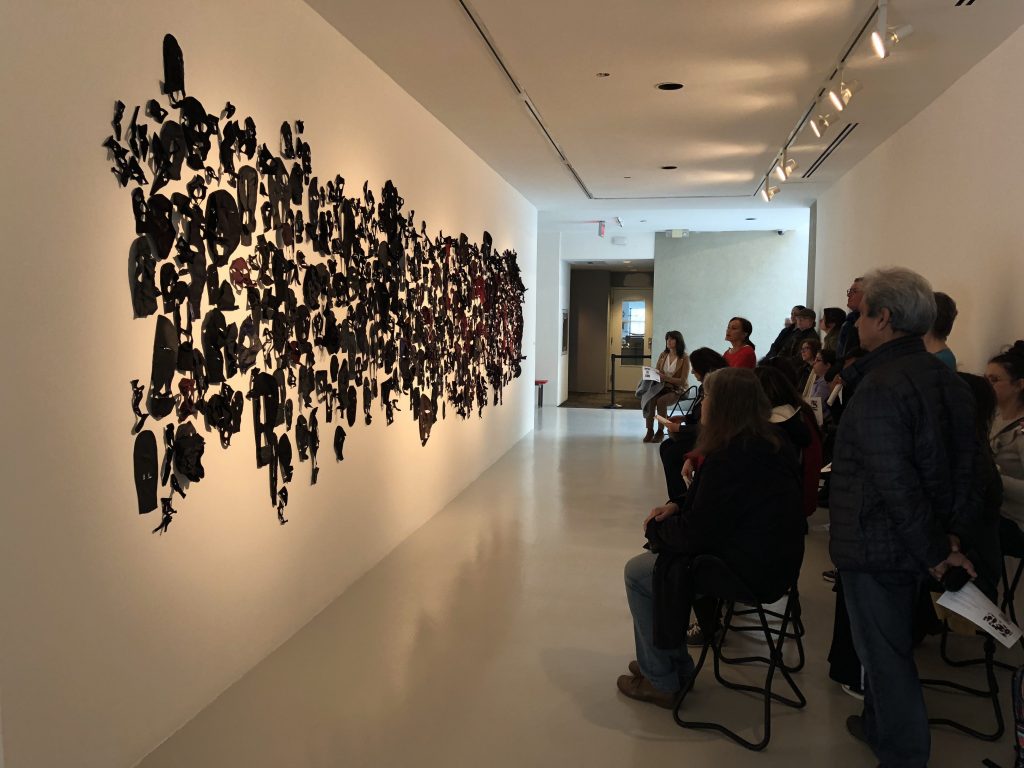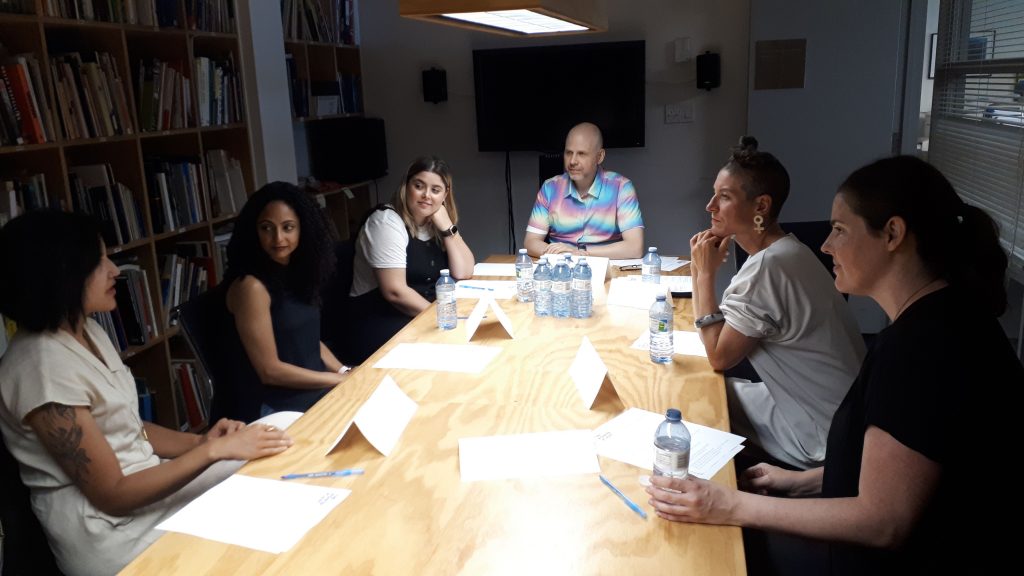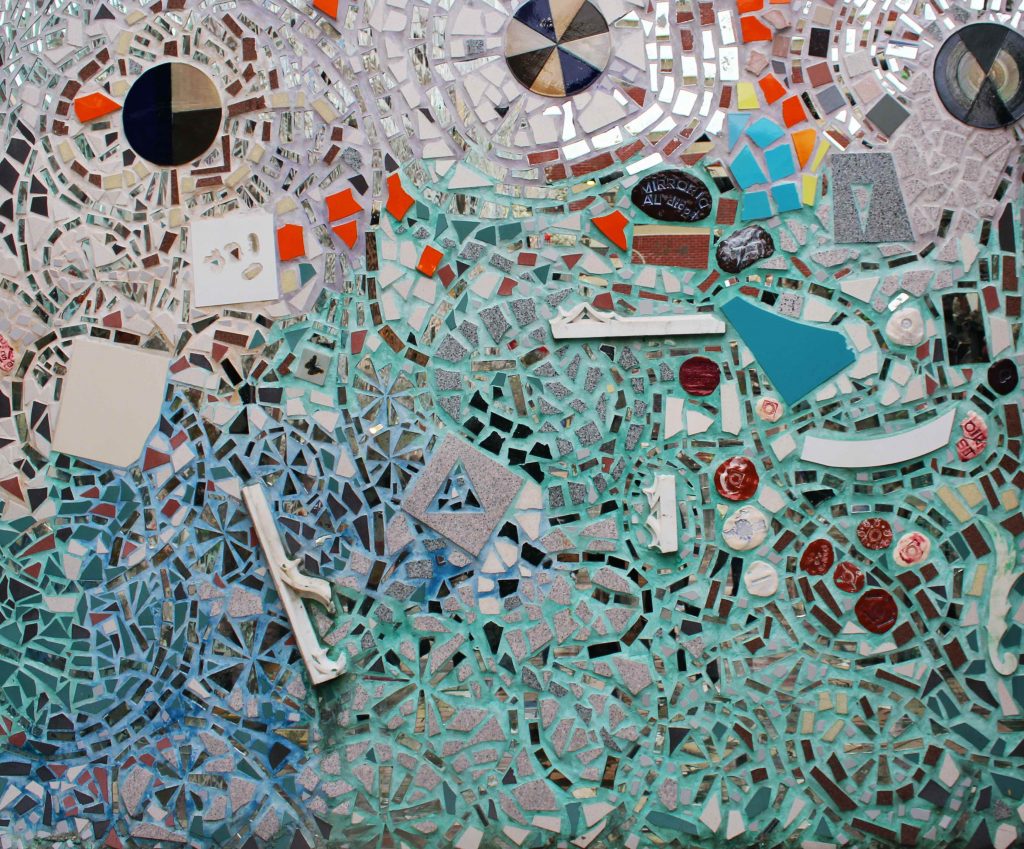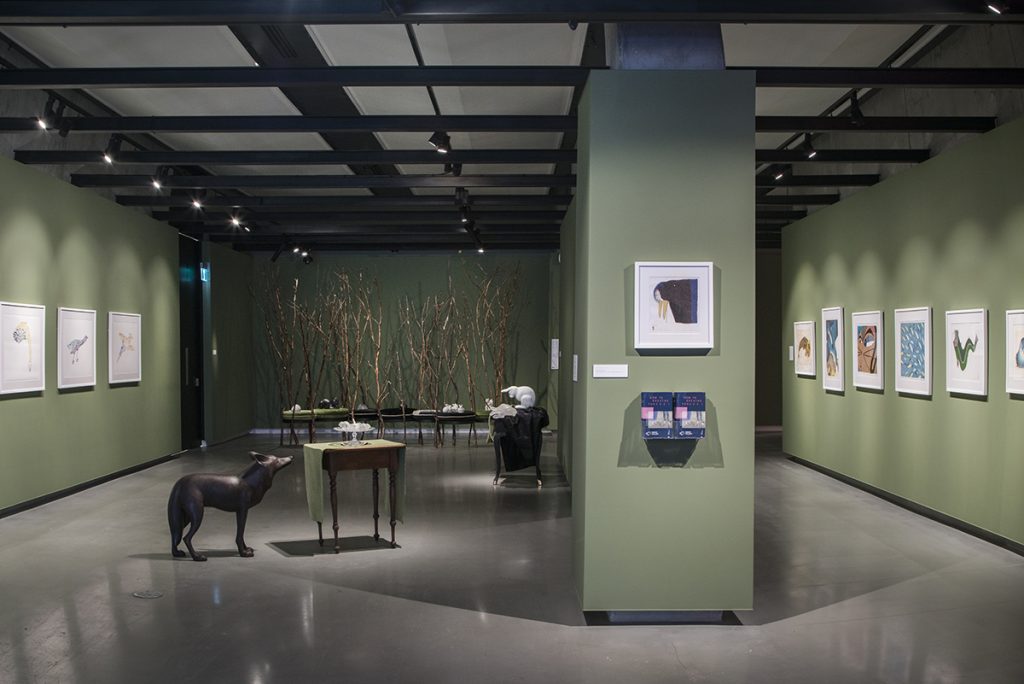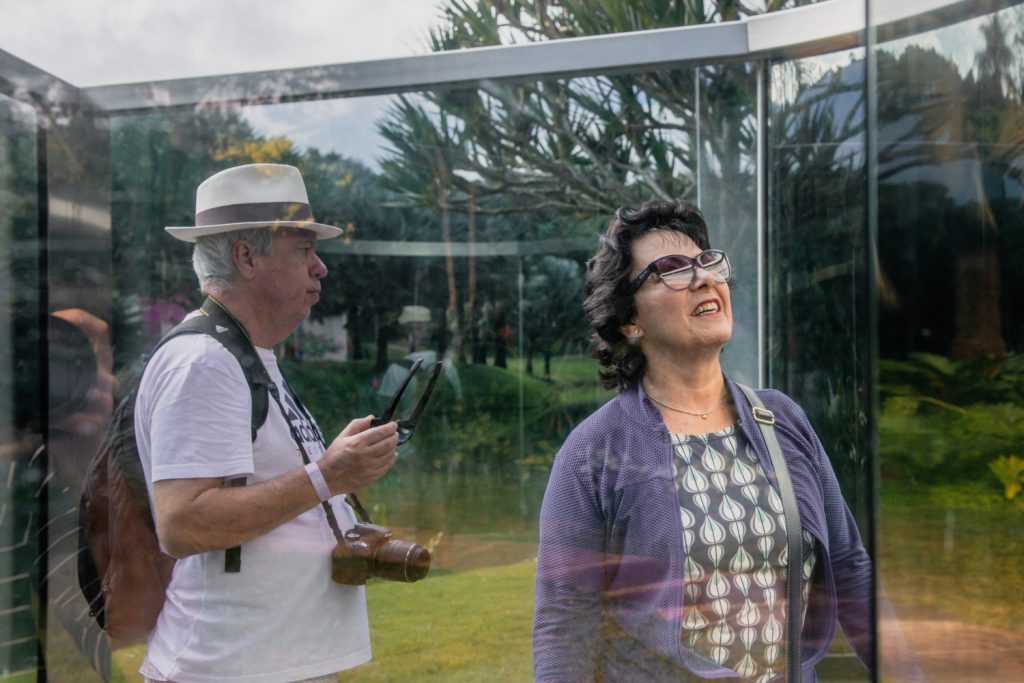Hawaii State Art Museum hosted it’s fourth Slow Art Day in 2019, led by two museum guides who work for the State Foundation on Culture and the Arts (SFCA) arts education program.
The guides led two groups of participants through different slow-looking exercises. One group focused on portraits using Visual Thinking Strategies as prompts. The other group focused on narratives they developed while slowly looking at three selected artworks.
Afterward, participants were encouraged to share their observations and thoughts with each other, and all were given a card with Visual Thinking Strategy prompts to take home with them.
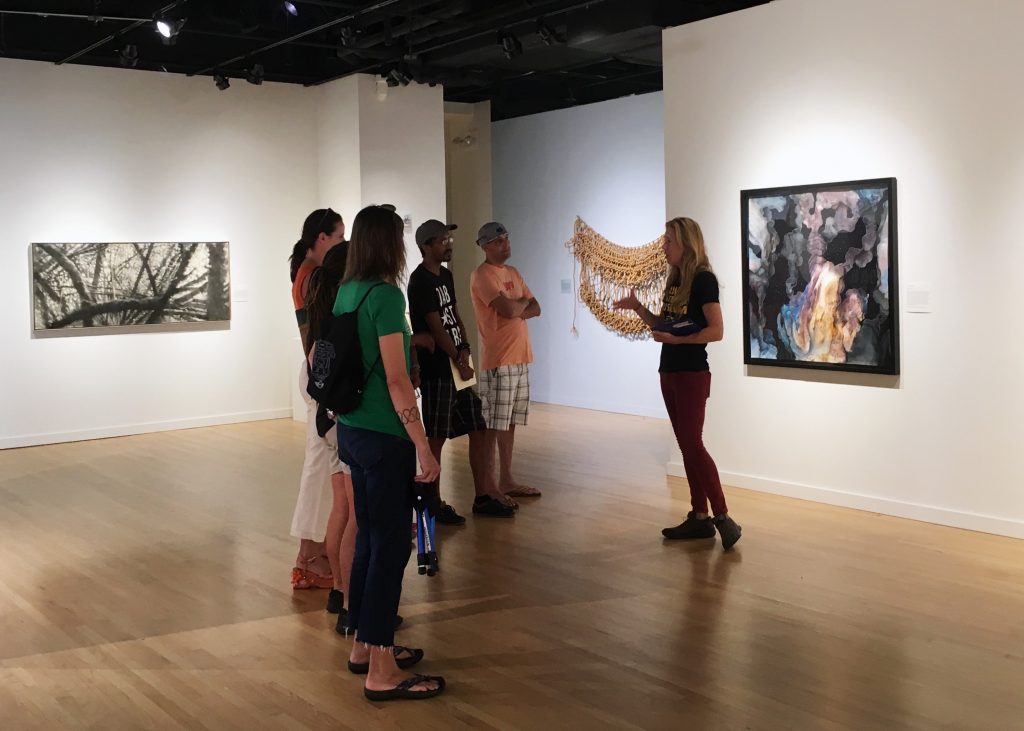
Photo Credit: State Foundation on Culture and the Arts.
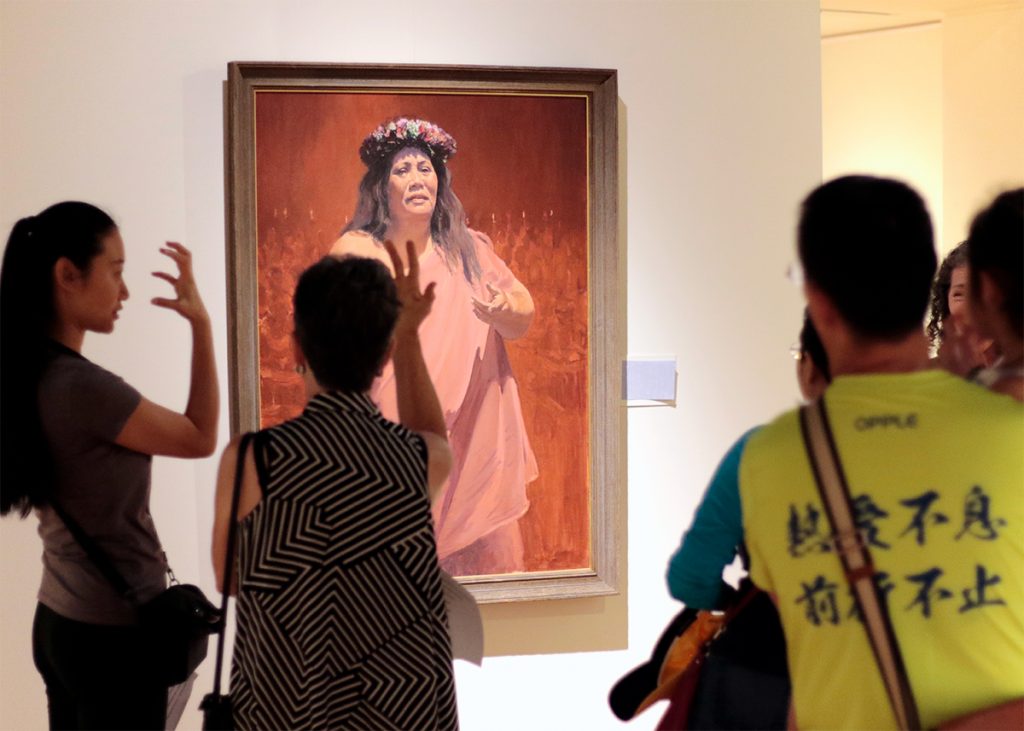
Photo Credit: State Foundation on Culture and the Arts.
Mamiko Carroll, Public Information Officer for the State Foundation on Culture and the Arts, reported:
People who were total strangers at the beginning were sharing deep thoughts and feelings with each other at the end. Some of the participants even hugged each other goodbye!
We love to hear how Slow Art Day can bring people together around meaningfully shared experiences of slowly enjoying art, and look forward to Hawaii State Art Museum’s participation in 2020.
– Ashley

